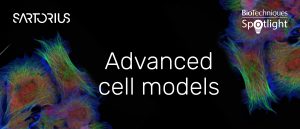Investigating frontotemporal dementia with cerebral organoids

New organoid models help reveal the mechanisms driving the death of excitatory neurons, leading to frontotemporal dementia.
A recent research collaboration, spearheaded by Kathryn Bowles at Mount Sinai (NY, USA), has revealed part of the mechanism responsible for the mutant tau induced death of excitatory neurons, a characteristic of frontotemporal dementia. The study, published in Cell, used newly developed cerebral organoids to gather this information and test potential treatments to prevent the development of frontotemporal dementia.
The rare frontotemporal forms of dementia strike earlier than more common forms, typically between 40–60 years, with one extensively studied form of the disease characterized by the mutation tau-V337M. Studying the cause of this condition; however, can be very challenging explains senior author Alison Goate (Mount Sinai):
“Understanding the causes of dementia can be difficult, as most of the damage to the brain occurs well before any symptoms appear. It’s like trying to unravel the events that created a crime scene.”
To resolve this issue, the research team examined thousands of cerebral organoids, developed by the Neural Stem Cell Institute (NSCI; NY, USA), derived from cells of three individuals with the tau-V337M mutation. Isogenic organoids generated from the same individual’s cells but with the mutation corrected were used as controls.
The team examined the organoids over the course of 6 months as they developed. At the 6-month mark signs of neurodegeneration were clear in the tau-V337M organoids including reduced prevalence of the excitatory glutamatergic cortical neurons, inflammation and raised levels of mutant tau protein.
Advanced cell cultures represent a new window through which researchers can observe the developmental biology of organs, the underlying pathogenesis and progression of diseases and the impact of therapeutics on both diseased and healthy tissues.
To investigate what was happening during the 6-month period, the researchers examined organoids at earlier stages. At 2 months elevated mutant tau, stress granules and the gene-regulatory RNA binding protein ELAVL4 were observed. Between 2 and 6 months, autophagy disruptions and splicing changes were observed, while overall maturation of neurons was accelerated in the mutant organoids, compared to the control.
Describing the utility of the organoids in the study, Director of the NSCI Sally Temple stated that, “by combining iPSC-organoid technology with high-throughput, single-cell gene-activity analysis, we were able to get a better look at what might be going on in a patient’s brain at early stages of disease development, even before symptoms emerge.”
Bowles summarized the observations from the initial experiment, theorizing that, “our results suggest that the V337M mutant tau sets off a vicious cycle in the brain that puts excitatory neurons under great stress. It hastens the production of new proteins needed for maturation but prevents disposal of the proteins that are being replaced.”
Glutamatergic cortical neurons fire in response to the neurotransmitter glutamate and die if glutamate levels are too high. To test her conclusions, Bowles demonstrated that the excitatory neurons in the mutant organoids were more likely to die in the presence of high levels of glutamate. With this established, Bowles administered the experimental drug apilimod, which impacts the system of autophagy in cells, to the organoids. Apilimod successfully reduced the levels of neuronal cell death at toxic glutamate levels in the mutant organoids to that of the control group.
The team hopes that the models and methods used in this study can set the benchmark for further investigations into disease course, helping to provide a more detailed understanding of the mechanisms driving neurodegenerative disorders and to identify new targets. “There is hope is that one day we will develop effective treatments for frontotemporal dementia and other heart-wrenching neurodegenerative disorders,” concluded Goate.
